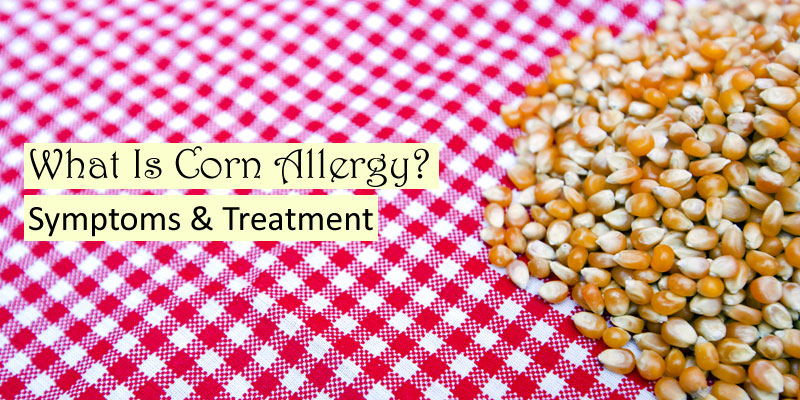Corn contains certain chemicals known as lipid transfer proteins. They are primarily marked as the allergens or chemicals which cause this food allergic to some individuals. Research studies, though limited on this subject, have also reported of citric acid present in corn to be another allergen. It is better to know about corn allergy symptoms beforehand in order to diagnose it early and treat them on time.

Corn allergy as the condition is known is rare but severe in the United States. It often goes unrecognized and is difficult to manage as there are large number of foods in which corn is present.
What Is Corn Allergy?
Corn allergy is caused when the immune system mistakenly identifies the corn proteins present in the corn as harmful and tries to fight against it. This can result in the allergic reaction such as hives, stomach ache, rash etc.
Corn allergy is a kind of food allergy, which is difficult to identify as there are a number of food products which use corn derivatives. The only way to manage corn allergy is to completely avoid corn and corn products.
Corn is present in various forms such as dextrose, dextrin, fructose, sorbitol, starch, caramel, baking powder etc. Many food products such as dairy products, meat products, baked goods, salad dressings, creams, soft drinks, chips, candies, sauces etc. contain corn. Hence, it is important for people with corn allergies to avoid all these.
Corn Allergy Test
Knowing if you have corn allergy is the best way to manage it. An allergist can conduct a blood test or a skin test to determine if you have a corn allergy.
Corn Allergy Symptoms
Below are some of the top symptoms of corn allergy –
- Skin rash
- Itching
- Swelling
- Vomiting
- Asthma
- Diarrhea
- Hives
- Headache
- Stomach ache
- Wheezing
- Coughing and Sneezing
- Anaphylaxis – A severe form of allergic reaction which spreads quickly all over the body
Corn Allergy Treatment
The simple and effective way to get rid of any allergy is to stay away from the substances which contain the allergen. Knowledge of the food items containing corn as a component is as effective as treating the condition itself. The following are the food items which are the sources of corn:
- Vegetable soup
- Corn syrup
- Commercial soups
- Peanut butter
- Various meats like cold cuts, hotdogs, ham, sausages
- Breaded or fried foods
- Cheese
- Fish sticks
- Corn meal
- Chop suey
- Chow mein
- Chili
- Cheese spreads
- Fried potatoes or rice using corn oil
- Mixed vegetables which is frozen and canned
- Polenta
- Succotash
- Pork and beans
- Corn oil
- Pancake syrups
- Graham crackers
- Corn starch
- Creamed vegetables
- Tacos
- Pancakes (certain mixes)
- Baking mixes
- Vegetable oil
- Breads dusted with corn meal
- Gravy with thickened with corn starch
- English muffins
- Popcorn
- Salad dressings
- Tamales
- Maize
- Dates and other fruit confections
- Ice creams, sherbets
- Canned or frozen fruits sweetened with corn syrup
- Corn fritters
- Carbonated beverages such as Coca-Cola, 7-Up, etc
- Grits
- Chocolate milk, milk shakes, soy milks, eggnog
- Hominy
- American wines, whiskey, gin and beer
- Corn tortillas
- Powdered sugar
- Lemonade
- Instant coffees
- Chewing gums
- Margarine
- Jams and jellies
- Catsup
- White distilled vinegar
- Candies
- Corn Flakes
- Baking powder
- Cake yeast
- Vitamin preparations
- Corn sugars
- Gelatin capsules
- Monosodium glutamate
- Bleached flour
- Laundry starch
- Adhesives like envelopes, stamps and stickers, stamps
- Sauces
- Toothpastes
In addition to the above treatment methods. one should take care of below too.
- Read the labels while shopping and avoid products containing corn
- Avoid fast food. While eating out, check for the ingredients used in the dish and beware of cross-contamination
- Take a note of the foods which trigger allergic reactions. In this way, you can avoid such foods in the future
- Be careful of certain adhesives and envelopes as they may contain corn
Apart from strictly avoiding these foods, keeping drugs like Epi-pen in the reach can use all the time. It provides the patient the valuable time to visit the doctor after accidentally getting exposed to the corn allergen.
